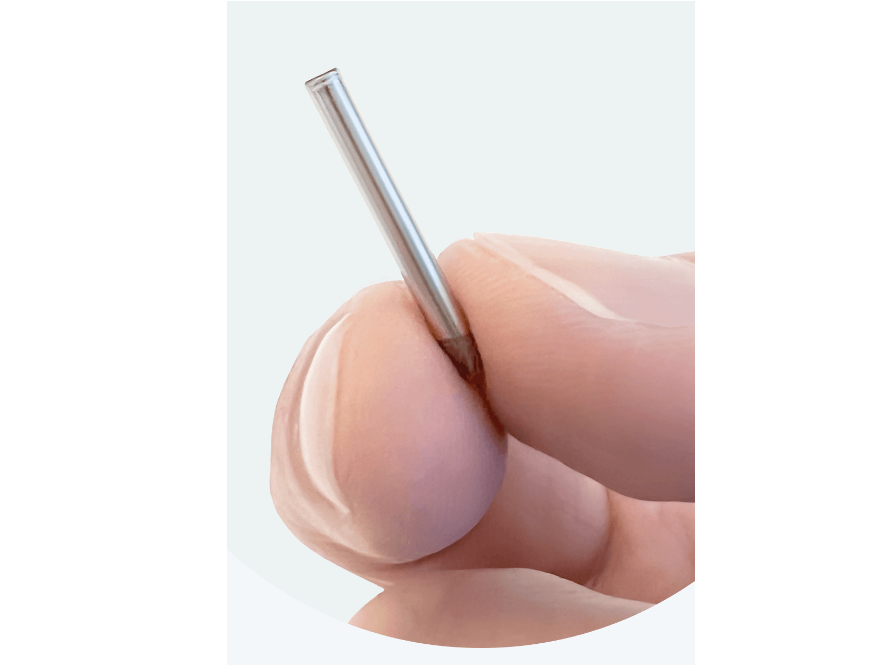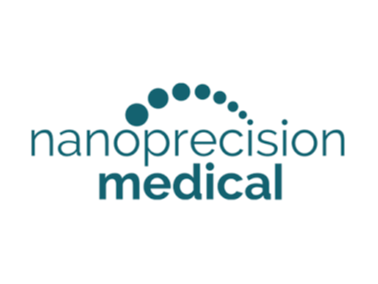Type of technology
Titanium implant
Administration route
Subcutaneous, Intraocular
Development state and regulatory approval
Exenatide
Phase I
Not provided
Description
The NanoPortal implant device technology are customizable drug delivery system according to the desired drug release rate, implant duration, and various other factors specific to the target product profile. NanoPortal holds significant potential to improve tolerability by addressing common issues associated with the API and its variable drug release patterns. Smaller nanotube pore size and fewer exposed nanotubes produces slower drug release rates.
Developer(s)

Vivani Medical, Inc., headquartered in Alameda, California, develops biopharmaceutical implants leveraging their proprietary NanoPortal™ platform. The company focuses on creating long-term drug delivery solutions to address chronic diseases such as type 2 diabetes and chronic weight management. Vivani was formed from the merger of Nano Precision Medical, Inc. and Second Sight Medical Products, Inc
Technology highlight
• Space-Efficient Design • No pumps or electronic devices • Subdermal Administration • Incorporation of different concentrations of API • Vertical nanotubes (40 micrometers in length) attached to titanium substrate • The content of the tubes are customizable depending on the desired delivery rate of the API • Pore is only slightly larger than the API molecule, you can achieve a near constant steady rate of medication deliver
Illustration(s)
Technology main components
The NanoPortal implant typically consists of • A housing (Capsule) • Titania (TiO2) nanotube membrane • Obturator • Pressure reducer • Connector for transport of fluid • Reservoir for biocompatible fluid
Not provided
Delivery device(s)
NanoPortal Implantable drug delivery system: Titanium-based subcutaneous implant with nanopore membrane for drug delivery
APIs compatibility profile
Therapeutic agents of type 2 diabetes, high blood pressure, heart disease, stroke, joint problems, liver disease, gallstones, some types of cancer, and sleep & pulmonary diseases are targeted for NanoPortal Implant drug delivery system.
NanoPortal has the potential to deliver large hydrophilic molecules, such as peptides and proteins, potentially enabling a broader range of therapeutic applications.
Not provided
Not provided
Not provided
Not provided
Scale-up and manufacturing prospects
Not provided
• Plasma treatment system • Uv-ozone treatment unit • Chemical activation bath • Dip-coating machine • Spin-coating device • Spray-coating equipment • Layer-by-layer assembly setup • Thermal curing ovens • Chemical curing stations • Annealing furnaces • Controlled atmosphere chambers
ISO Class 5 to ISO Class 8 with HEPA filters Process of manufacturing includes: • Preparation of Nanoporous Substrate: Create nanopores in polycarbonate using ion track etching/ anodization/ phase inversion • Surface Treatment and Coating Preparation: Enhance adhesion with plasma treatment or chemical activation; prepare the coating solution with desired materials and additives • Application and Curing of Coating: Apply the coating via dip-coating or spray-coating, then dry and cure using thermal treatment, UV irradiation, or chemical curing • Post-Treatment and Characterization using SEM.
• Scanning Electron Microscopy (SEM) • Atomic Force Microscopy (AFM) • Fourier Transform Infrared Spectroscopy (FTIR) • Raman spectroscopy • Differential Scanning Calorimetry (DSC) • Thermogravimetric Analysis (TGA) • Tensile testing • Nanoindentation • Gas Adsorption (BET Analysis) • Mercury Intrusion Porosimetry • High-Performance Liquid Chromatography (HPLC) • Mass Spectrometry (MS) • X-ray Photoelectron Spectroscopy (XPS)
Excipients
No proprietary excipient used
No novel excipient or existing excipient used
No residual solvent used
Additional features
- Drug-eluting
- Removable
- Single-use
- Reservoir-type
Minimally fluctuating drug release profile were observed in pre-clinical studies.
Insertion using smaller 11-gauge needle
Phase I (LIBERATE-1) safety and efficacy studies of NPM-115 are ongoing.
Not provided
Not provided
Therapeutic area(s)
- Diabetes
- Other(s) : "Hypertension, Coronary Heart Disease, Stroke, Arthritis, Liver disease, Gallstones, and Sleep & Pulmonary diseases"
- Oncology
Not provided
Potential associated API(s)
- Exenatide
- Semaglutide
Use of technology
- Administered by a community health worker
- Administered by a nurse
- Administered by a specialty health worker
Weekly, Monthly, Every 12 weeks
Not provided
Targeted user groups
- Adults
- Older Adults
- All
Unspecified
Unspecified
Unspecified
Not provided
Exenatide
GLP-1 agonist
Phase I
NCT05670379
Obesity, Type II Diabetes Mellitus, Feline Pre-Diabetes & Diabetes
Not provided
Once every 12 weeks
Not provided
Semaglutide
GLP-1 Analogues
Pre-clinical
Not provided
Obesity
Not provided
Not provided
Not provided
Implant Delivery System with Hydration Promotor Capability
The application pertains to apparatuses, means and methods to promote uptake of biocompatible fluids into a reservoir of an implantable drug delivery system though a porous membrane. Examples of the application promote fluid uptake by creating a pressure differential between the reservoir of the drug delivery device and the biocompatible fluid outside the device.
WO2018067535
Medical Device
Nano Precision Medical, Inc.
Not provided
October 7, 2037
Not provided
Apparatus and Method for Promoting Fluid Uptake into an Implant
The invention pertains to apparatuses, means and methods to promote uptake of fluids into a reservoir of an implantable drug delivery system though a porous membrane. Embodiments of the invention promote fluid uptake by creating a pressure differential between the reservoir of the drug delivery device and the environment of the device after implantation, for instance a subcutaneous pocket.
WO2016123027
Medical Device
Nano Precision Medical, Inc.
Not provided
January 26, 2036
Not provided
Implant Device for Drug Delivery
The present invention provides a method for controlling the internal diameter of nanopores to afford nanopore membranes with a zero-order rate of release of a therapeutic agent.
WO2015112811A1
Medical Device
Nano Precision Medical, Inc.
Not provided
January 23, 2035
Not provided
Publications
There are no publication
Additional documents
Useful links
Collaborate for development
Consider on a case by case basis, collaborating on developing long acting products with potential significant public health impact, especially for low- and middle-income countries (LMICs), utilising the referred to long-acting technology
Share technical information for match-making assessment
Provide necessary technical information to a potential partner, under confidentiality agreement, to enable preliminary assessment of whether specific medicines of public health importance in LMICs might be compatible with the referred to long-acting technology to achieve a public health benefit
Work with MPP to expand access in LMICs
In the event that a product using the referred to long-acting technology is successfully developed, the technology IP holder(s) will work with the Medicines Patent Pool towards putting in place the most appropriate strategy for timely and affordable access in low and middle-income countries, including through licensing

